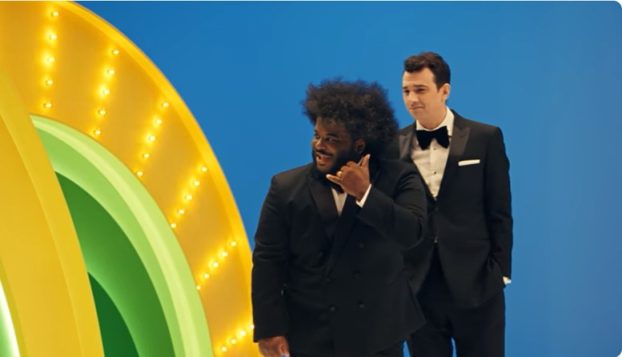Be happy, it’s finally true: you’re an ageless wonder. At least that’s the message behind more and more marketing today.
As baby boomers redefine what it means to age (40 is the new 30, after all) and young people control the media sphere, the line between youth and adult marketing is blurring. Youth culture is now contemporary culture, and gone are the days when marketing to youth and adults employed different age-appropriate tactics and strategies.
‘Youth culture used to be about a specific age group,’ says Ken Therrien, CD at DDB KidThink, the Vancouver-based youth agency. ‘Now it’s about an attitude that transcends age groups. The quest for youth and youthfulness is driving popular culture.’
While youth culture has always been a precursor of trends, what’s different now, according to experts, is that seismic societal and technological movements are contributing to a complete upheaval of the definitions of young and old. Today, young people live at home and stay in school longer, delaying marriage and having children. The result is, in a sense, an extended adolescence.
It has also, says Robert Barnard, founder of Toronto-based Decode, resulted in the creation of a youth/adult life stage that his research agency calls the Young Independents.
Based on research from a June 2007 Decode report, Barnard says that Young Independents represent about 10% of the Canadian population. ‘They are 18 to 35, even 40, not in school and don’t have kids,’ he says. ‘They can be in a common-law relationship, married or single, any of those combinations, [but]
they are in between those two institutions of school and family.’
Barnard says it is a stage where those living it may feel uncertain about where their lives are going, but those on the outside covet its appearance of freedom and lack of responsibility. ‘It is becoming the societal signal of youthful,’ he says. ‘The Young Independent is a more contemporary version of youthfulness as opposed to a teenager.’
Technology – namely the Internet – is also profoundly contributing to the upheaval. ‘Media has changed over the past 10 to 15 years in a way that we’ve never seen before,’ says Mike Farrell, partner and chief strategic officer at Toronto-based youth agency Youthography. ‘The Internet is the new printing press. And the people who are in charge, born into this new printing press, are young people.
‘For us, a culture of 30+, [the Internet is] learned behavior. For them, it’s just what’s up. It’s all about them, and it’s all been driven by them.’ Farrell points to the fact that social networks such as Facebook, MySpace and even Google and eBay were all created by people in their early 20s – and have
permeated the wider cultural landscape rapidly and completely.
‘What’s happening with this generation is that they’re actually driving trends – both psychographics and values,’ he says. ‘They’re changing demography and, on top of that, they’re in charge of the entire media. Everything’s coming together, so it’s a perfect storm of youth culture completely and utterly influencing the larger mainstream culture in a more robust way than ever before.’
In the realm of marketing, that’s meant the adoption of youthful tactics such as gaming and social media for brands skewing all ages – running the gamut from online spoofs to alternate reality games (ARGs).
Even traditionally serious brands are tapping into the movement. Farrell highlights the new energy behind Scotiabank’s recent sponsorship initiatives (Nuit Blanche), advertising and brand hook-ups like Scene, its loyalty program partnership with movie theatre chain Cineplex.
‘Scene is a bank-oriented lifestyle promotion program that you wouldn’t have seen before,’ he says. (His agency contributed to some of its initial research.)
‘They’re starting to see that they’re not going to alienate their older customers by doing this. And in the current cultural context, it might make older customers feel a little more youthful, or add a nice halo of youthfulness to their brand.’
It’s an attitude that’s also being reflected in the bank’s retirement ads, says DDB’s Therrien. In a current spot, a couple is consulting with a Scotiabank financial planner. While he is interested in a low-key retirement, she silently reveals her true plans to the Scotiabank rep through a series of handwritten signs: tennis lessons and a trek through South America.
‘His version of retirement is what it used to be, it’s the old,’ says Therrien. ‘Her version is youthful. Wouldn’t a 21-year-old love to have the financial resources to take tennis lessons or explore Brazil? So it’s tapping into that youth ideal.’
Another financial institution using youthful marketing tactics is Desjardins General Insurance. When the Levis, Que.-based financial giant wanted to launch a campaign last year targeting 18- to 24-year-old drivers in Ontario making their first foray into car insurance, the brand was relatively unknown among the target. So the challenge lay in creating awareness for Desjardins, as well as generating interest in a product typically pitched at older consumers.
To get there, with the help of Youthography, two viral videos were released onto the web in March as the start of a larger campaign which also included two TV spots, radio, cinema, OOH and print ads. In one video, ‘Damage,’ a group of teen boys watches their car being demolished by a bizarre, invisible force in a parking lot, and in ‘Theft,’ a car flies up into the sky while teen girls watch in astonishment.
One version of the videos directs consumers to mycarisgone.com, where they can comment on it and forward it to friends. They can also opt to receive further communication from Desjardins. Another version directs them to geared4u.ca, a site that provides information about insurance for young drivers, and quotes.
‘It was intuitive for us to do something viral,’ explains Sean Claessen, creative director at Youthography. ‘If you say that your product is for young people, you have to walk the walk. A viral campaign is more tangible than anything you can do with traditional advertising.’
The viral spots hit YouTube last June, and Claessen says the campaign succeeded in raising awareness of the brand among the youth demographic and driving traffic to the geared4u.ca site. But there are more practical changes that still have to occur within the industry, says Decode’s Barnard. Media buying, for example, still in large part operates like the man in the Scotiabank ad, he says. ‘Companies have to find a way to buy media [according to life stage],’ he says. ‘They have to get away from age-based segmentation; it doesn’t work.’
‘[With media] things roll along quickly, but youthfulness is constant,’ says Therrien. ‘You have to be on top of it, because what’s new today is not new tomorrow.’
Jump to:
Scope gets fresh with your breath
Nissan plays with Much to spark demand























